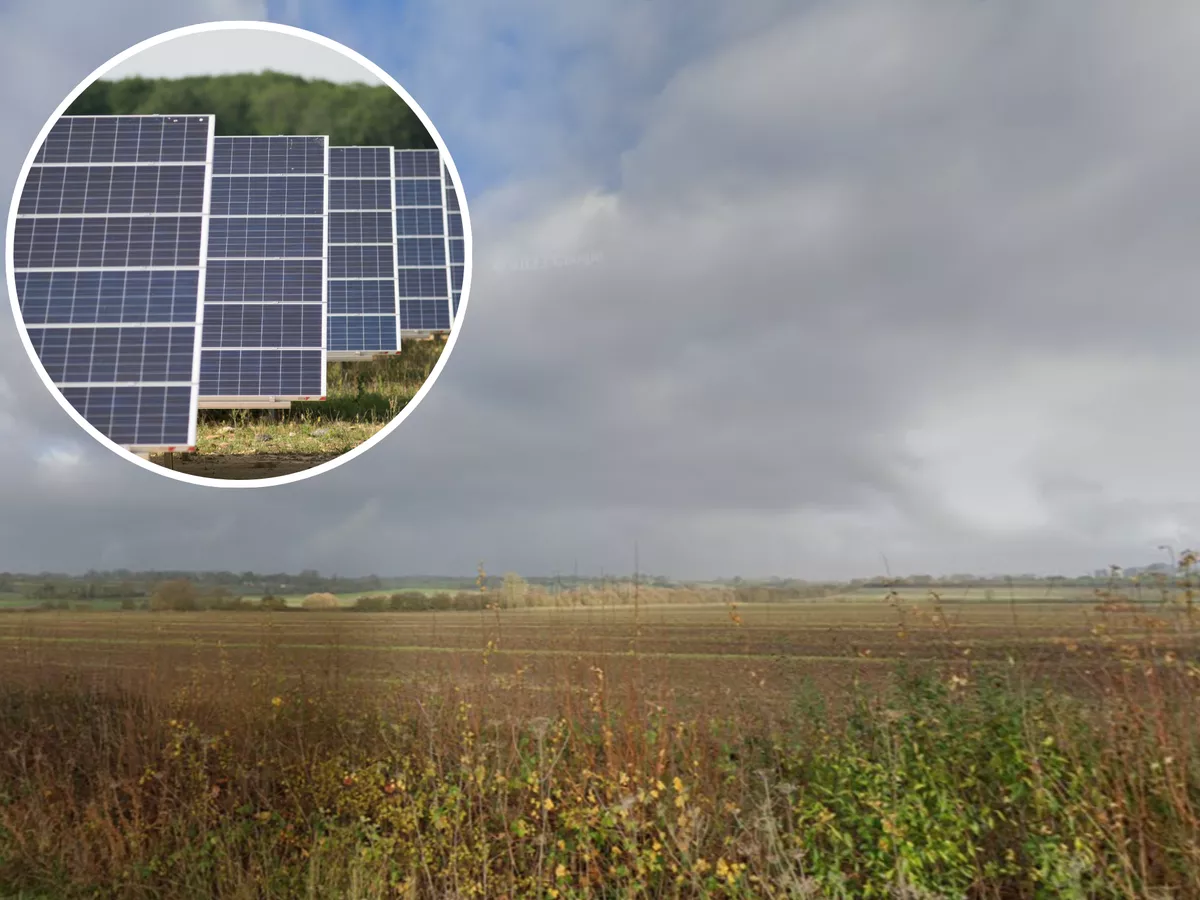Plans to develop a large-scale solar farm on farmland close to the M1 Watford Gap services have officially received the green light from West Northamptonshire Council. The project will install over 15,000 solar panels across an 18-acre (7.3 hectare) field near key transport links, significantly boosting the UK’s renewable energy goals and supporting local sustainability efforts.
Solar Farm Near M1 Watford Gap: Project Overview and Location
The developers plan to install the solar farm about 300 meters (984 feet) from the Watford Gap services on the M1 motorway. The site is a large open field next to the A5 and existing warehouses, previously used for grazing livestock instead of growing crops.

James Walker, a representative of the development firm PS Renewables, described the project to the council’s strategic planning committee as “a relatively small solar farm comprising a single field.” Though modest compared to global solar projects, this installation promises to make a significant impact locally and regionally.
Environmental and Visual Impact of the Solar Farm Near M1
During the council meeting, members emphasized that the solar installation’s visual impact would remain minimal.
The backdrop of existing warehouses and nearby wind turbines effectively reduces any aesthetic disturbance, ensuring that the landscape’s character remains intact for residents and travelers along the M1 corridor.
The integration of renewable energy infrastructure alongside current industrial and commercial uses in the area represents a thoughtful approach to balancing development and landscape preservation.
Renewable Energy Benefits from the Solar Farm Near M1
Once operational, the solar farm will have the capacity to generate up to 6 megawatts (MW) of clean, renewable electricity. According to the project developers, this amount of energy could power approximately 2,100 average UK homes annually, providing a substantial boost to local and national renewable electricity supplies.

James Walker emphasized the importance of domestic electricity generation, stating, “The solar farm will reduce carbon emissions according to legal standards and provide electricity generated in the UK for use within the country.
Sustainable Land Use and Livestock Integration
As an innovative approach to combining sustainable agriculture with renewable energy, the land will remain in use for livestock grazing after the solar panels are installed. Sheep will graze beneath and around the panels, promoting biodiversity and helping maintain the field’s ecological balance.
This dual use of land is gaining popularity as a practical method to maximize rural land use without sacrificing agricultural productivity or ecosystem health.
Planning Process for the Solar Farm Near M1
West Northamptonshire Council received no objections to the solar farm application, signaling community acceptance or indifference toward the project. The unanimous vote by the council’s strategic planning committee to approve the development reflects local government support for renewable energy initiatives that align with environmental policies.

The approval process included detailed scrutiny of environmental impacts, land use, visual effects, and energy contribution, underscoring the council’s commitment to responsible and sustainable planning.
Renewable Energy in the UK: Context and Importance
The approval of the solar farm near Watford Gap services comes at a critical time for the UK’s energy sector, which is undergoing a significant transition toward low-carbon and sustainable power sources.
Solar energy, as one of the fastest-growing renewable technologies worldwide, plays an essential role in the UK’s strategy to meet its net-zero carbon emissions target by 2050. Projects like this contribute not only to energy security but also to job creation in the green economy and rural economic diversification.
Economic Impact and Future Prospects
Beyond environmental benefits, the solar farm is expected to have positive economic implications for the local area. Construction and ongoing maintenance activities will create jobs and demand for local services.
Moreover, this project may pave the way for additional renewable energy developments in West Northamptonshire and surrounding counties, encouraging further investment in sustainable infrastructure.
Challenges and Opportunities in Renewable Energy Development
While the Watford Gap solar farm is a positive step, challenges remain in scaling renewable energy projects across the UK. Issues such as grid capacity, land availability, and community acceptance must be navigated carefully.
However, innovative approaches—such as integrating agriculture and renewable energy or siting projects near existing infrastructure—offer solutions that balance growth and environmental stewardship.
A Model for Sustainable Development
The newly approved solar farm near M1 Watford Gap services exemplifies how strategic planning, community collaboration, and sustainable land management can come together to support the UK’s renewable energy ambitions.
As the nation strives to reduce its carbon footprint and foster green economic growth, projects like this serve as tangible examples of progress, illustrating the potential for clean energy to power homes while preserving local landscapes and livelihoods.




